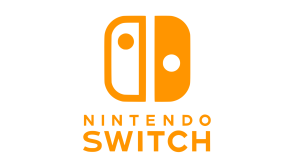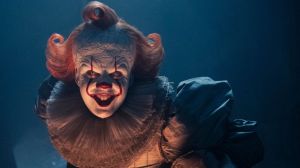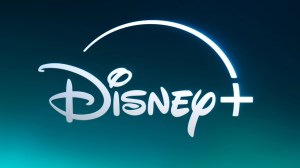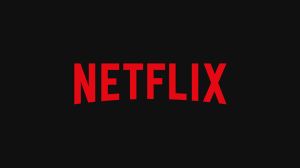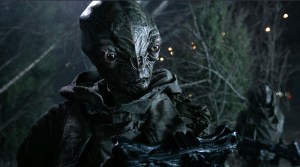The full trailer for Peacemaker Season 2 revealed that two crime-fighting characters from Superman would be appearing in this John Cena-headlined program. Isabela Merced’s Hawkgirl and Nathan Fillion’s Guy Gardner/Green Lantern show up briefly in the trailer, mocking Peacemaker, thus establishing how this Suicide Squad character is firmly an underdog in the DC Universe. It’s also another sign that the various TV show and movie characters in James Gunn and Peter Safran’s new multimedia take on the DC Comics mythos were profoundly intertwined.
Videos by ComicBook.com
Fillion’s Green Lantern will even show up in HBO’s Lanterns TV show alongside Kyle Chandler’s Hal Jordan and Aaron Pierre’s John Stewart. For the DC Universe, there will be no barrier between the big and small screen. This saga is hitting the ground running as something that transpires across streaming and movie theaters. However, if there’s any DC Universe detail that already suggests problems for this franchise, it’s this emphasis on shared continuity between movies and television.
Juggling Movie & TV Mythology Asks Too Much of the Audience

It’s one thing to ask people to remember who plays Batman and Superman in massive theatrically-released motion pictures. Such high-profile projects dominate pop culture so thoroughly that just being cognizant of whose faces are showing up on superhero movie promotional billboards is enough to keep track of key continuity details. Plus, these projects typically range from 120-150 minutes. Compare that to the eight or ten hours of material crammed into an average season of television. Such material also doesn’t tend to get nearly as much promotion as a movie, which can render those characters more obscure to the general public.
Those two details alone demonstrate the struggles of balancing movie and TV continuity, particularly in having TV storytelling inform what directions motion pictures go in. Asking people to constantly keep track of every player in lengthy seasons of television is too daunting a task. After all, TV has been defined throughout history as a relaxed form of storytelling where you can chill with your best pals on Seinfeld, Community, or other sitcoms. Dramas like ER or Law & Order provide concise problems that get solved every week in a tidy fashion. Utilizing this medium to lay the groundwork for movies runs antithetical to either the most escapist or artistic goals of television.
Plus, when it comes to the heightened world of DC Comics characters, the budgetary confines of television just don’t seem ideal. Lanterns, for instance, will take the uber-cosmic world of Green Lantern and ground it in a murder mystery set in Nebraska. Forget all the gloriously colorful outer space domains from the Green Lantern comics or endearing weirdo aspects of Green Lantern lore like Tomar-Re, Kilowag, or the Pink Lanterns. Fitting into the confines of what an HBO program “should” look like means the Green Lantern world is being whittled down into uber-ground cost-conscious material. Why emphasize televised storytelling in the DC Universe if it just sounds like it’ll deprive these characters of their most distinctive traits?
[RELATED: I Think The Authority Should Be The Next DC Universe Movie (Because It Could Change The Franchise Forever)]
Marvel’s Television Woes Provide a Cautionary Tale for the DCU

If anything crystallizes the perils of the DC Universe immediately embracing serialized storytelling across movies and television, it’s the Marvel Cinematic Universe’s creative woes in the 2020s. Starting in 2021, Marvel Studios began delivering a slew of streaming programs to Disney+ that quickly hampered the franchise in countless ways. For starters, making movies like The Marvels and Multiverse of Madness so reliant on pre-existing television storylines made those features incoherent to general audiences. Meanwhile, ramping up the small screen output with shows like Secret Invasion diluted the quality track record of Marvel Studios.
Most troublesome, though, was how the Disney+ shows instantly removed the special nature of Marvel superheroes. In the 2010s, these were grand characters that could only be witnessed in delightful communal experiences at your local movie theater. Bringing Wanda Maximoff, Nick Fury, Hawkeye, and other MCU staples to Disney+ just diluted their specialness. Now they were just something you could watch on your couch while scrolling on your phone. Once these figures returned to the big screen, the damage was done. Audiences understandably wondered why they should pay movie ticket prices to see characters populating their televisions.
In trying to make sure the DC Universe is omnipresent in culture (not to mention supplying sister companies to DC Studios like HBO and HBO Max with programming), this franchise is threatening to imitate the MCU’s Phase Four and Five problems in its earliest days. This relaunch of the DC characters in live-action needs delicate character, not immediately slathering big-screen superheroes all over the small screen. If Gunn and Safran want to make the DC Universe’s most prominent characters feel special and coherent to general audiences, then this multimedia shared universe approach must cease. The risk is too great and the rewards far too minimal to sabotage the DC Universe by stretching its storytelling across both Max and multiplexes.
Peacemaker Season 2 begins airing on HBO Max on August 21st.

